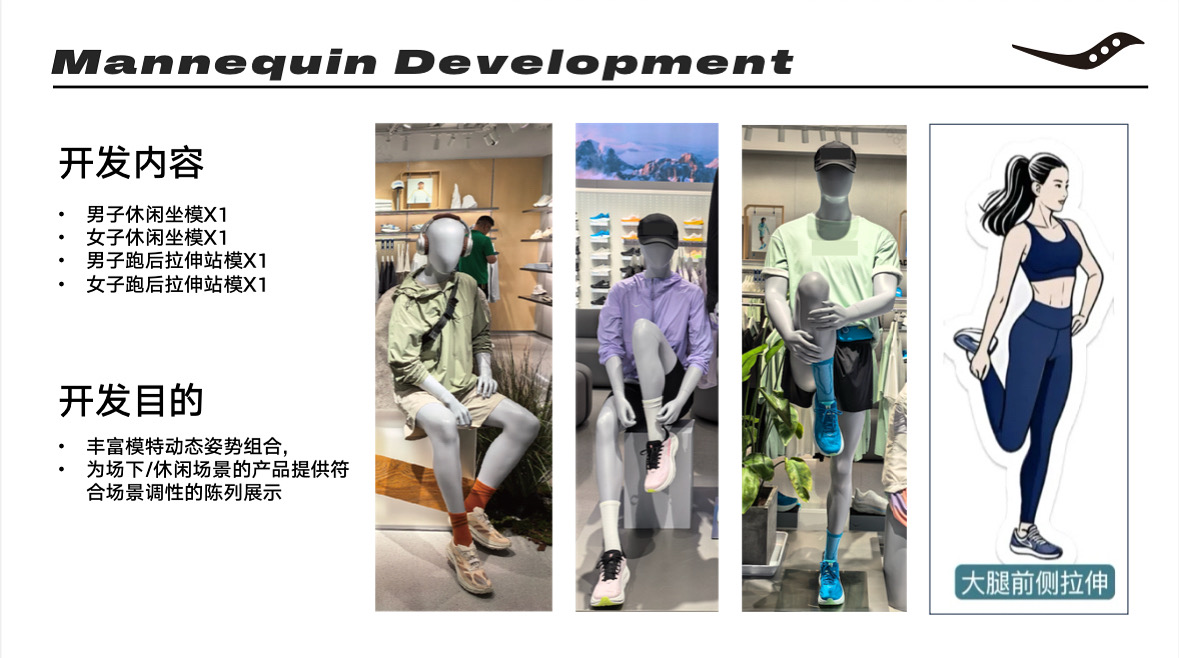Unlimited possibilities in mannequin development
Mannequin development today represents far more than the creation of simple display figures. It has evolved into a dynamic field that combines artistry, engineering, fashion understanding, and consumer psychology. The phrase “unlimited possibilities in mannequin development” captures the essence of an industry that continuously adapts to new trends, technologies, and creative demands. Modern mannequins are no longer static forms; they are versatile tools that communicate brand identity, elevate presentation, and engage audiences in both physical and digital spaces.
One dimension of this limitless potential lies in design diversity. Mannequins can now be developed to reflect a wide range of body types, ages, and postures, offering realistic representations that align with the growing demand for inclusivity in fashion. From athletic builds to petite frames, from youthful energy to mature elegance, mannequins are designed to showcase garments as they would appear on different individuals. This not only enhances relatability for customers but also celebrates the diversity of human form.
Another critical aspect is functionality. Beyond their outward appearance, mannequins are increasingly engineered for flexibility and modularity. Interchangeable parts allow retailers and designers to adjust poses, swap limbs, or modify stances, ensuring that displays remain fresh and dynamic. Some mannequins incorporate adjustable systems, enabling them to adapt to a wide variety of garments, from structured suits to flowing dresses. This versatility makes them valuable for both long-term retail use and short-term exhibitions or fashion shows.
Technological innovation further broadens the horizon. With the rise of digital integration, mannequins are being paired with interactive elements, augmented reality, or smart sensors that enhance customer engagement. Imagine a mannequin that not only displays an outfit but also projects styling options, color variations, or fabric details through integrated displays. These developments blur the line between static presentation and immersive retail experience, opening doors to unprecedented creativity in visual merchandising.
Material experimentation also plays a significant role in expanding possibilities. Developers explore lightweight yet durable substances that ensure longevity while being environmentally conscious. Recyclable plastics, sustainable composites, and innovative finishes contribute to mannequins that are both functional and eco-friendly. This aligns with the global push toward responsible production, allowing retailers to present their collections while also reflecting sustainable values.
Mannequin development also intersects with artistry. Sculptors and designers collaborate to create lifelike features, expressive postures, or even abstract forms that serve as works of art in their own right. In luxury boutiques, avant-garde mannequins function as statement pieces, complementing high-end collections with sculptural elegance. In contrast, minimalist mannequins are designed to remain subtle, directing focus entirely toward the clothing. This spectrum of creative expression underscores the limitless ways mannequins can be conceptualized.
The possibilities extend into cultural and thematic adaptability. Mannequins can be tailored to reflect local traditions, regional aesthetics, or thematic campaigns. For example, seasonal adjustments—such as festive stances for holidays or sporty energy for athletic collections—allow mannequins to become part of a narrative rather than just background props. Their ability to embody mood, theme, or cultural nuance makes them indispensable storytelling tools in retail and exhibitions alike.
In addition, mannequins contribute significantly to enhancing garment presentation. Their carefully designed forms highlight tailoring, emphasize silhouettes, and showcase fabric flow in ways that flat displays cannot. Whether it is the sharp cut of a business suit, the delicate drape of a gown, or the casual look of everyday wear, mannequins bring clothing to life, giving customers a sense of fit and style. This practical function, combined with aesthetic contribution, solidifies their role as essential elements in fashion communication.
The future of mannequin development also promises integration with digital retail environments. Virtual mannequins are already emerging in e-commerce, where 3D models allow customers to visualize outfits from multiple angles. The physical counterparts, meanwhile, are expected to evolve with sensors, motion capability, and customization features that further enrich the shopping journey. Together, physical and digital mannequins create a hybrid model that extends the concept of display into interactive, experiential realms.
Ultimately, the phrase “unlimited possibilities in mannequin development” reflects not only the technological and design advancements but also the imagination driving the industry forward. Each new material, posture, or integration broadens the horizon of what mannequins can achieve. They are no longer limited to being silent figures in storefronts; they are interactive, adaptable, and meaningful components of fashion storytelling. As retail, exhibitions, and consumer expectations evolve, mannequins will continue to reinvent themselves, proving that the boundaries of their development are indeed without limit.



